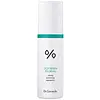What's inside
What's inside
 Key Ingredients
Key Ingredients

 Benefits
Benefits

 Concerns
Concerns

 Ingredients Side-by-side
Ingredients Side-by-side

Water
Skin ConditioningMelaleuca Alternifolia Leaf Water
AntimicrobialGlycerin
HumectantNiacinamide
Smoothing1,2-Hexanediol
Skin ConditioningMethylpropanediol
SolventButylene Glycol
HumectantArginine
MaskingAllantoin
Skin ConditioningAcrylates/C10-30 Alkyl Acrylate Crosspolymer
Emulsion StabilisingCentella Asiatica Extract
CleansingPanthenol
Skin ConditioningPolyglyceryl-10 Laurate
Skin ConditioningXanthan Gum
EmulsifyingSodium Polyacrylate
AbsorbentEthylhexylglycerin
Skin ConditioningPentylene Glycol
Skin ConditioningDisodium EDTA
Caprylyl Glycol
EmollientMelaleuca Alternifolia Leaf Oil
AntioxidantChamaecyparis Obtusa Water
MaskingSalicylic Acid
Masking4-Terpineol
MaskingOenothera Biennis Flower Extract
AstringentPinus Palustris Leaf Extract
TonicPueraria Lobata Root Extract
HumectantUlmus Davidiana Root Extract
Skin ConditioningWater, Melaleuca Alternifolia Leaf Water, Glycerin, Niacinamide, 1,2-Hexanediol, Methylpropanediol, Butylene Glycol, Arginine, Allantoin, Acrylates/C10-30 Alkyl Acrylate Crosspolymer, Centella Asiatica Extract, Panthenol, Polyglyceryl-10 Laurate, Xanthan Gum, Sodium Polyacrylate, Ethylhexylglycerin, Pentylene Glycol, Disodium EDTA, Caprylyl Glycol, Melaleuca Alternifolia Leaf Oil, Chamaecyparis Obtusa Water, Salicylic Acid, 4-Terpineol, Oenothera Biennis Flower Extract, Pinus Palustris Leaf Extract, Pueraria Lobata Root Extract, Ulmus Davidiana Root Extract
Water
Skin ConditioningGlycerin
HumectantCaprylic/Capric Triglyceride
MaskingButyrospermum Parkii Butter
Skin Conditioning1,2-Hexanediol
Skin ConditioningPolyglyceryl-3 Methylglucose Distearate
EmulsifyingDicaprylyl Carbonate
EmollientGlyceryl Stearate Se
EmulsifyingBehenyl Alcohol
EmollientCentella Asiatica Extract
CleansingCarbomer
Emulsion StabilisingTromethamine
BufferingSodium Stearoyl Glutamate
CleansingEthylhexylglycerin
Skin ConditioningMicrocrystalline Cellulose
AbsorbentAdenosine
Skin ConditioningDisodium EDTA
Cellulose Gum
Emulsion StabilisingMadecassoside
AntioxidantBeta-Glucan
Skin ConditioningActinidia Arguta Fruit Extract
Skin ConditioningTocopherol
AntioxidantWater, Glycerin, Caprylic/Capric Triglyceride, Butyrospermum Parkii Butter, 1,2-Hexanediol, Polyglyceryl-3 Methylglucose Distearate, Dicaprylyl Carbonate, Glyceryl Stearate Se, Behenyl Alcohol, Centella Asiatica Extract, Carbomer, Tromethamine, Sodium Stearoyl Glutamate, Ethylhexylglycerin, Microcrystalline Cellulose, Adenosine, Disodium EDTA, Cellulose Gum, Madecassoside, Beta-Glucan, Actinidia Arguta Fruit Extract, Tocopherol
Ingredients Explained
These ingredients are found in both products.
Ingredients higher up in an ingredient list are typically present in a larger amount.
1,2-Hexanediol is a synthetic liquid and another multi-functional powerhouse.
It is a:
- Humectant, drawing moisture into the skin
- Emollient, helping to soften skin
- Solvent, dispersing and stabilizing formulas
- Preservative booster, enhancing the antimicrobial activity of other preservatives
Centella Asiatica Extract (Centella) is derived from an herb native to Southeast Asia. It is famous for its anti-inflammatory and soothing properties.
Centella is rich in antioxidants and amino acids, such as Madecassic Acid and Asiaticoside.
Studies show the compounds in centella help with:
The combination of all these properties makes centella effective at soothing, hydrating, and protecting the skin.
Other great components of centella include Vitamin A, vitamin C, several B vitamins, and Asiatic Acid.
Fun fact: Centella has been used as a medicine and in food for many centuries. As a medicine, it is used to treat burns, scratches, and wounds.
Learn more about Centella Asiatica ExtractDisodium EDTA plays a role in making products more stable by aiding other preservatives.
It is a chelating agent, meaning it neutralizes metal ions that may be found in a product.
Disodium EDTA is a salt of edetic acid and is found to be safe in cosmetic ingredients.
Learn more about Disodium EDTAEthylhexylglycerin (we can't pronounce this either) is commonly used as a preservative and skin softener. It is derived from glyceryl.
You might see Ethylhexylglycerin often paired with other preservatives such as phenoxyethanol. Ethylhexylglycerin has been found to increase the effectiveness of these other preservatives.
Glycerin is already naturally found in your skin. It helps moisturize and protect your skin.
A study from 2016 found glycerin to be more effective as a humectant than AHAs and hyaluronic acid.
As a humectant, it helps the skin stay hydrated by pulling moisture to your skin. The low molecular weight of glycerin allows it to pull moisture into the deeper layers of your skin.
Hydrated skin improves your skin barrier; Your skin barrier helps protect against irritants and bacteria.
Glycerin has also been found to have antimicrobial and antiviral properties. Due to these properties, glycerin is often used in wound and burn treatments.
In cosmetics, glycerin is usually derived from plants such as soybean or palm. However, it can also be sourced from animals, such as tallow or animal fat.
This ingredient is organic, colorless, odorless, and non-toxic.
Glycerin is the name for this ingredient in American English. British English uses Glycerol/Glycerine.
Learn more about GlycerinWater. It's the most common cosmetic ingredient of all. You'll usually see it at the top of ingredient lists, meaning that it makes up the largest part of the product.
So why is it so popular? Water most often acts as a solvent - this means that it helps dissolve other ingredients into the formulation.
You'll also recognize water as that liquid we all need to stay alive. If you see this, drink a glass of water. Stay hydrated!
Learn more about Water